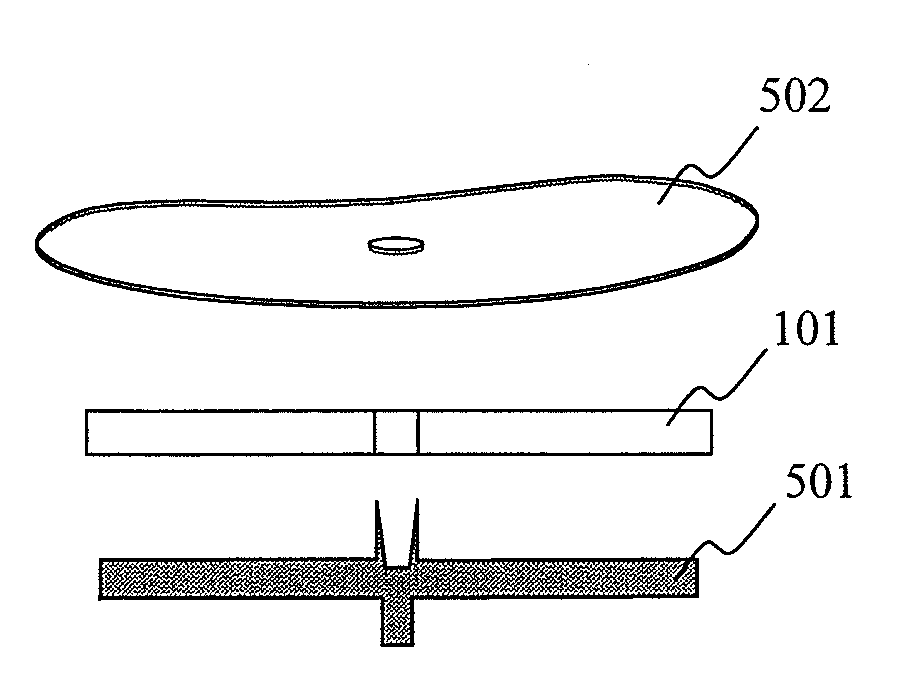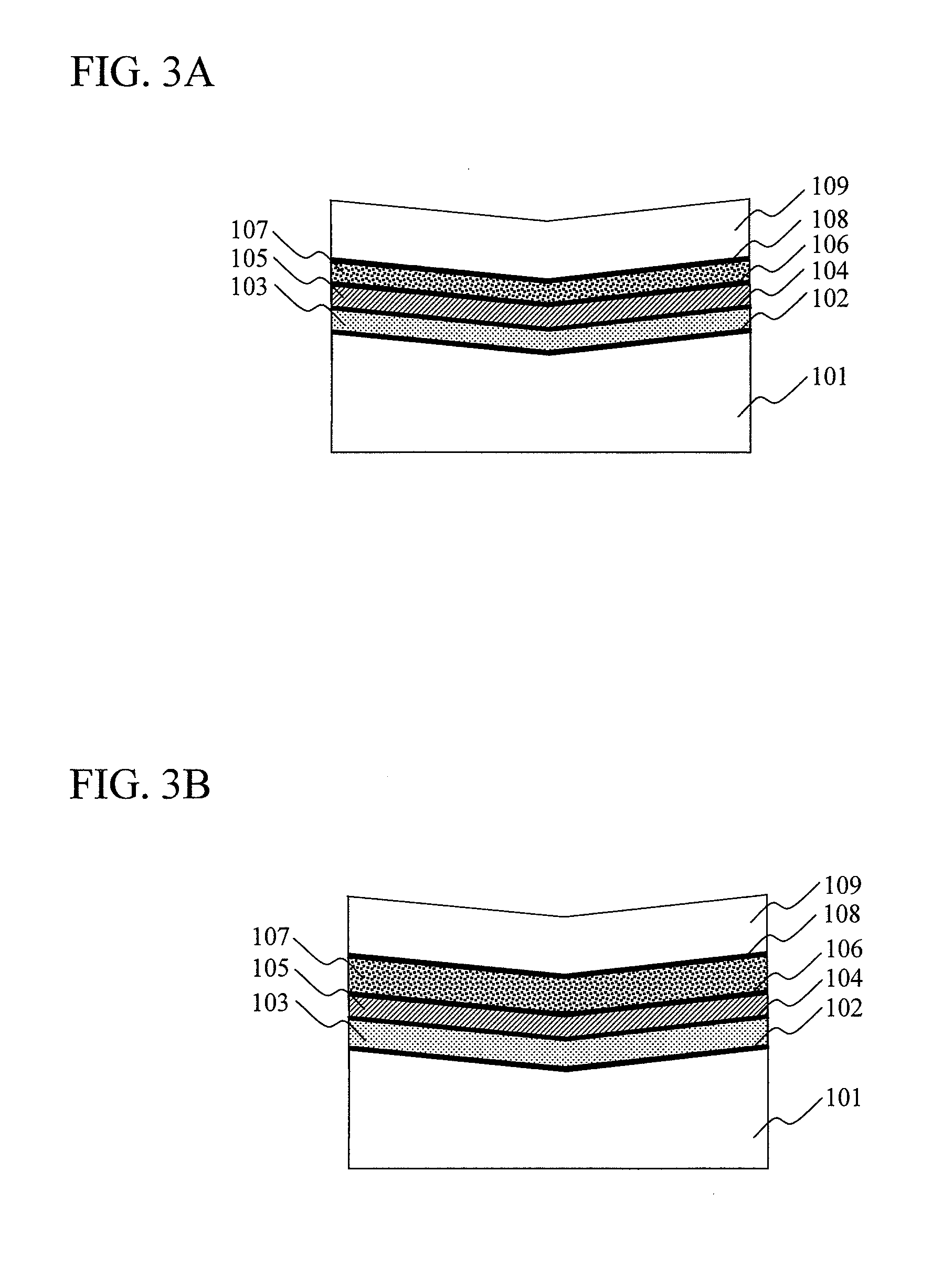Multi-information-layer recording medium and manufacturing process
- Summary
- Abstract
- Description
- Claims
- Application Information
AI Technical Summary
Benefits of technology
Problems solved by technology
Method used
Image
Examples
Embodiment Construction
[0045]The following will explain an embodiment of the present invention with reference to the drawings.
[0046]FIG. 3A and FIG. 3B show part of a cross-sectional structure of a manufactured multi-information-layer recording medium, respectively. The structure is formed including four information layers 102, 104, 106 and 108 on a substrate 101 with a cover layer 109 being formed thereon. Translucency spacers 103, 105, 107 are respectively sandwiched in between the information layers 102, 104, 106, and 108. FIG. 3A shows a structure where the thickness of each spacer is substantially the same one another and FIG. 3B shows a structure where the thickness of each spacer is different from one another.
[0047]FIGS. 4A to 4I, and FIG. 5 show a manufacturing process and a manufacturing flow, respectively. The manufacturing process to be explained here is applicable to not only a medium where the thickness of each spacer is substantially the same one another shown in FIG. 3A but also a medium wh...
PUM
| Property | Measurement | Unit |
|---|---|---|
| Length | aaaaa | aaaaa |
| Length | aaaaa | aaaaa |
| Thickness | aaaaa | aaaaa |
Abstract
Description
Claims
Application Information
 Login to View More
Login to View More - R&D
- Intellectual Property
- Life Sciences
- Materials
- Tech Scout
- Unparalleled Data Quality
- Higher Quality Content
- 60% Fewer Hallucinations
Browse by: Latest US Patents, China's latest patents, Technical Efficacy Thesaurus, Application Domain, Technology Topic, Popular Technical Reports.
© 2025 PatSnap. All rights reserved.Legal|Privacy policy|Modern Slavery Act Transparency Statement|Sitemap|About US| Contact US: help@patsnap.com



